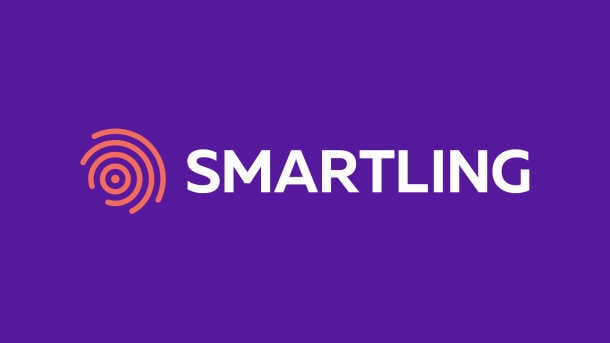As a leader in your business, you know how important it is to communicate effectively with your target audience and customers. It's why you value quality localization and translation strategies. You understand that the better you can connect with your multilingual audience, the more efficiently you can grow your brand.
That's why it's even more frustrating when you realize you're falling below expectations. It's one thing to adopt milestones and benchmarks, but it's another to reach them successfully.
When you have a straightforward way to measure and implement language quality assurance, you can confidently translate your content and brand, knowing that your materials accurately represent your message to local audiences.
Together, we'll explore why language quality assurance is essential, the common challenges companies face, and how you can improve your process for improved content output.
Why language quality assurance matters
When you've invested a great deal of time, resources, and effort into translating your website content, marketing materials, and communication, you want to ensure that you’ve done so responsibly.
There should be a clear return on investment, and translations should communicate your message just as effectively as the source text did for your native audience.
When companies produce translated content and publish it for their target audiences, they expect the content to accurately communicate the same message. You'll face damaging consequences if the content miscommunicates your message, shows translation errors, or fails to represent your brand. You could lose sales, suffer negative brand perception, or fail to capture your audience's attention.
But when you employ a language quality assurance process, you can make data-driven decisions to improve your localization process and reduce translation errors.
Your translated content will then land correctly and connect with your target audience because it will feel local and familiar rather than foreign. This way, you can grow your company, make more sales, and win loyal customers. all while saving time and money with efficient and accurate technologies.
Language quality assurance raises your translation standards so you can better reach local audiences—no matter the language or culture. You can successfully grow into new markets or improve your current multilingual market positioning with precise translations.
What are common language quality challenges?
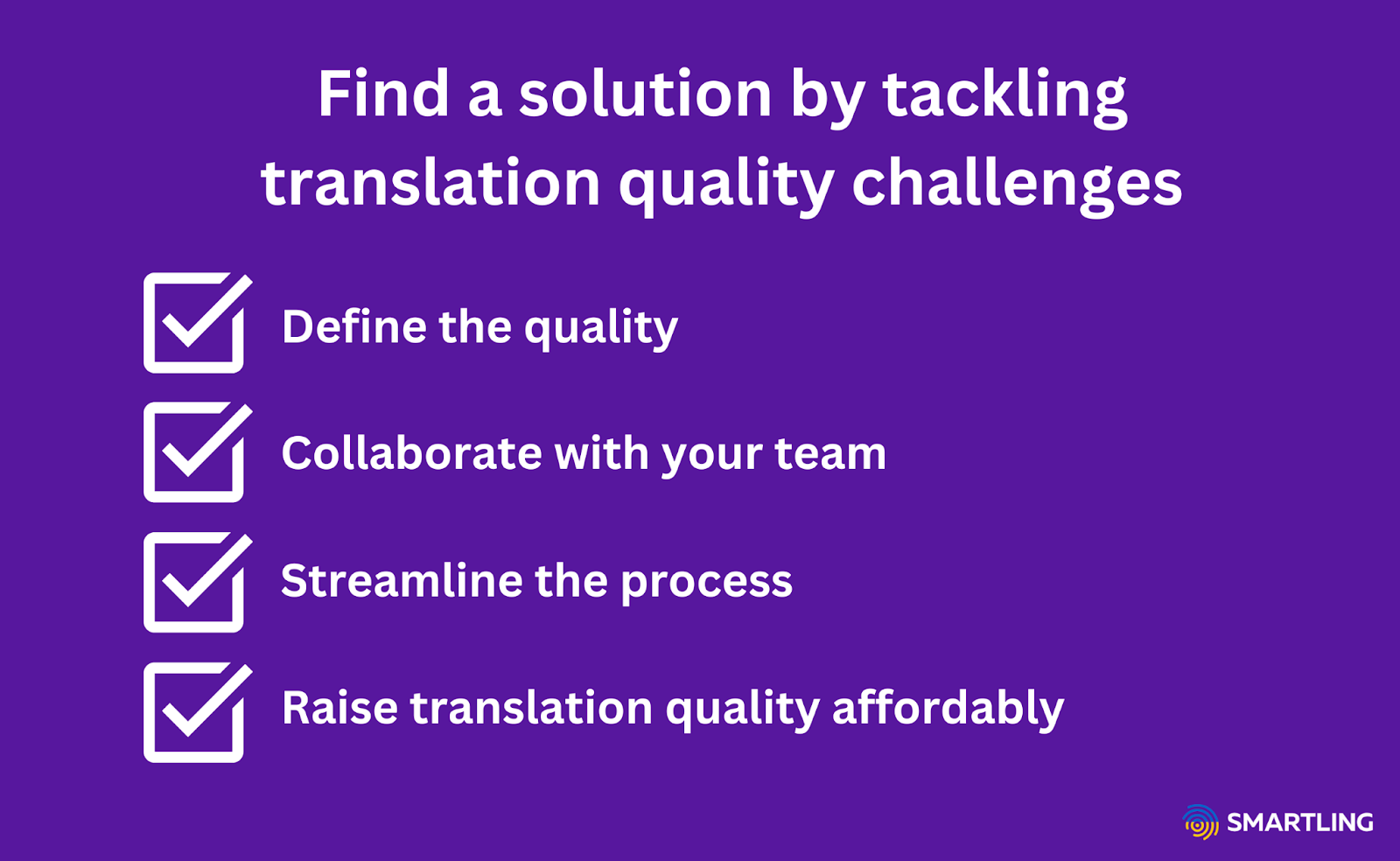 Language quality comes with its challenges, but with the right solution and partner, companies can overcome these obstacles.
Language quality comes with its challenges, but with the right solution and partner, companies can overcome these obstacles.
Translating your content and marketing materials for a local audience is challenging for many companies. Thankfully, once brands overcome these challenges by improving translation accuracy and incorporating cultural preferences, they can begin to grow in new markets. Below are some common difficulties that companies face when trying to improve language quality:
1. Defining quality
Translation quality is often subjective. What you think is a good translation may not work for a local customer. Even among customers, perceptions can vary.
That's why hiring a local translation expert is essential for identifying and improving poor translations with high-quality content that resonates with audience members from diverse backgrounds and within nuanced cultures. These human experts can then use AI and quality assurance technology to set the parameters and expectations for an accurate localized translation.
2. Collaborating and incorporating feedback
Translation quality often involves teams and leaders making essential decisions when communicating with each local audience. The process also involves translators processing and reviewing translations.
Companies must have the right translation management system to incorporate workflows that improve talent enablement and collaborative feedback for better translations.
3. Streamlining the process
There are many moving pieces to consider when creating translations, reviewing them for quality, and publishing the final results.
Companies can use translation memories and glossaries so AI can work faster through similar translations within brand parameters. Teams should be able to easily reference translations in context with a computer-assisted translation tool, and they should also be able to collaborate and process content with a translation management solution. By optimizing the machine translation and AI-powered human translator processes, teams can increase translation quality and efficiency at the same time.
An all-in-one solution can provide all of a localization team’s software needs, as well as services that will improve the process for more accurate translated content.
4. Raising quality without dramatically increasing costs
It's one thing to commit to higher-quality translated content, but it's another to put the process into action. Raising your standards for language quality assurance can be costly when you have to add on more tools and human labor to make it possible.
The right solution shouldn't cost your business—instead, it should save you the money you're already spending. The best language quality assurance solution should be more affordable because it provides faster, higher-quality translations. If teams can find a solution that assures high quality and also does everything they need for localization, they'll be steps ahead in creating a better experience for their target markets.
Best practices for linguistic quality assurance
When you think about the billions of pieces of content that need translation or the content you may already have translated that needs improvement, the process can feel daunting. Thankfully, localization doesn't have to be that way.
Localization is essential for expanding your company within the global market, and language quality assurance verifies that your effort is well-spent. Great translations connect with audiences and win over customers. Through language quality assurance, we ensure that we’re on the right track. 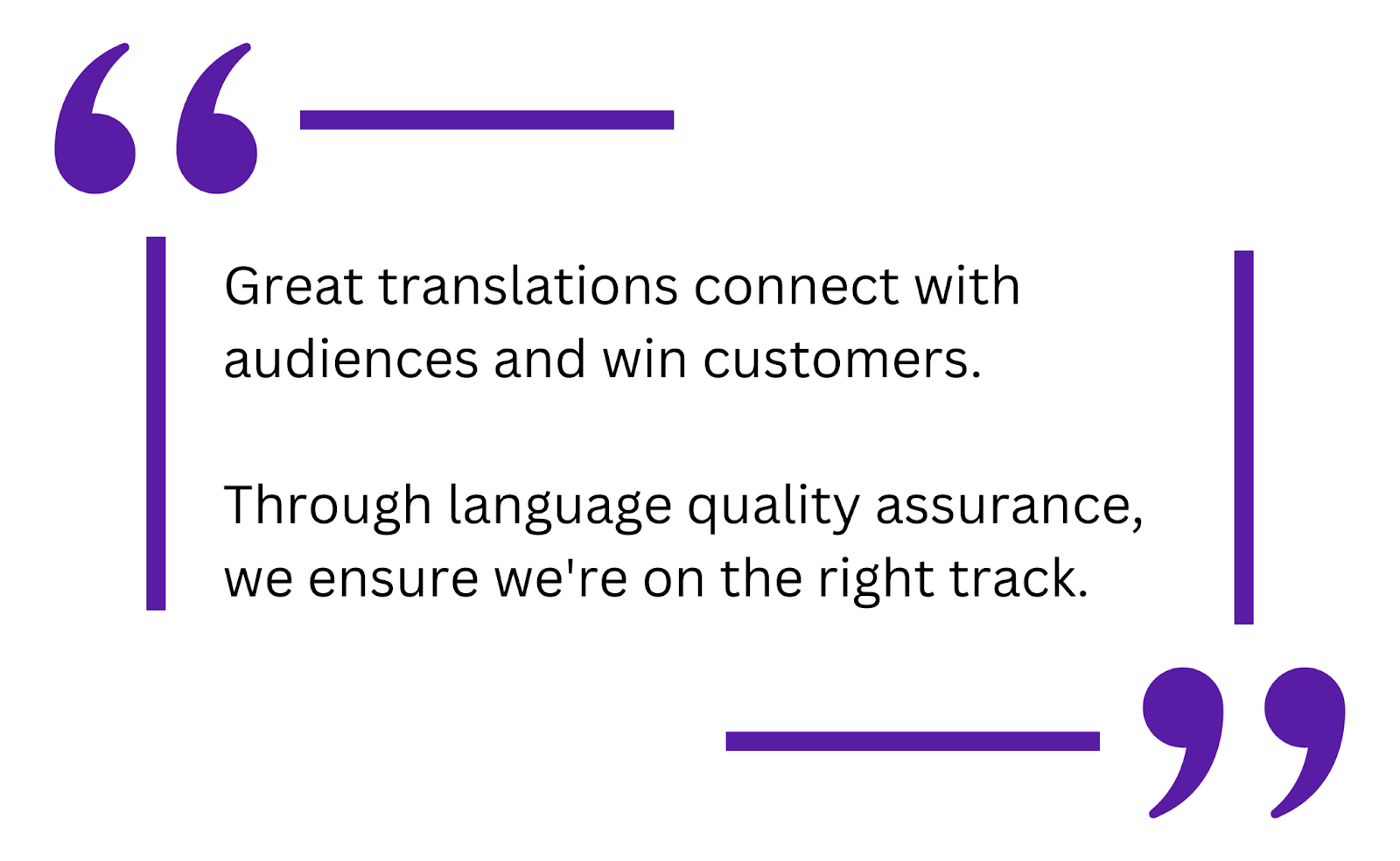 Language quality assurance helps you create better results so you can connect with local audiences.
Language quality assurance helps you create better results so you can connect with local audiences.
You can build a strong foundation for better language quality assurance with these critical practices:
1. Implement accurate multidimensional quality metrics
Multidimensional Quality Metrics (MQM) assess and monitor translated content’s quality. MQM technology standardizes language quality assurance to evaluate translated content across several categories.
The quality assessment framework helps to highlight your translation and localization process’s strengths. It also illuminates where brands have opportunities for improvement. With MQM, companies can evaluate both human and machine translations and create an effective system that adopts both traditional and innovative approaches to localization.
When companies evaluate translations with MQM, they can make strategic decisions and take action within their localization process using objective data.
For example, an MQM framework can show an organization's increased terminology errors and suggest revisions to the glossary. It can also identify stylistic errors and suggest edits to the brand’s style guide.
MQM is the best way to evaluate your current translation quality objectively, so it's a must-have framework for your foundation. A tool like Smartling pioneers this solution by offering MQM scores that are three points higher than the industry average (98 instead of 95).
2. Adopt efficient translation management and machine translation solutions
Quality assurance doesn't start with improving output. Instead, it begins by refining your translation process from the start. An efficient translation management system and machine translation solution helps with organizing translation processes and translating content at scale.
An excellent translation management system, like Smartling's solution, should perform the following workflow tasks:
- Assign content to translation workflows
- Notify users of new content
- Monitor translation progress and costs
- Upload and optimize linguistic resources
This, along with machine translation solutions like the Neural Machine Translation Hub, allow companies to efficiently manage and translate billions of words from source texts.
Once translation teams have an efficient translation stack, they can eliminate common gaps and focus on more complex issues during the language quality assurance process.
3. Hire native-speaking human translation experts
Local translation experts will always know your audience best because they understand local audiences’ cultural nuances, history, and expectations. When native-speaking translators combine their expertise with AI-powered technologies, they can translate and assess language quality at scale.
Arthur Delerue, founder and CEO of KWatch.io, a keyword alert tool for brands on social media, recounted a time when a translation project went wrong. Delerue told Smartling, “We recently realized that one of our technical articles about API webhooks was poorly translated, which led some of our French users to think that this article was about dating strategies. [...] Some of them reported the problem, and we could quickly fix that, but it quickly harmed our brand for a while.”
Your language quality assurance team can use its local expertise to verify that your content is accurate, relevant, and fully localized for the target audience. Even if it uses a wrong idiomatic expression or there’s a better way to communicate your message, a local expert can review it and improve your translation quality.
4. Invest in an all-in-one solution for consistency
Language quality assurance is only entirely possible with an efficient, organized system. It's almost impossible when companies juggle several tools and translation expert teams. This inefficient method leaves plenty of room for errors.
Translating Spanish, Chinese, Arabic, and other languages and dialects involves many complexities. But having a partner that can provide all the technologies and human services you need to translate content and assure language quality is paramount for a successful localization strategy.
Companies can find an all-in-one solution that streamlines localization and the language quality assurance process to provide better output and scale faster in the global market.
The role of AI in language quality assurance
Before today’s innovative AI technologies, localization teams had to navigate heavy manual processes to ensure high language quality. AI has changed that reality and now positions brands to assure language quality faster and more reliably.
Linguists use AI for everyday tasks like detecting errors and identifying spelling, formatting, and grammar mistakes—which saves hours of human labor. Machine translation also ensures that teams can translate a large amount of source text and produce translations precisely and accurately.
With translation memory, AI can save computing power and time by providing consistent translations based on learned terminology and language preferences. It can also maintain brand voice consistency across translations and reduce future errors.
Finally, AI directly verifies and finalizes translations in the language quality assurance stage. Teams can use AI to ensure that translations are accurate, meet standards, and do not include cultural biases and other critical elements in localized text.
Smartling ensures top language quality
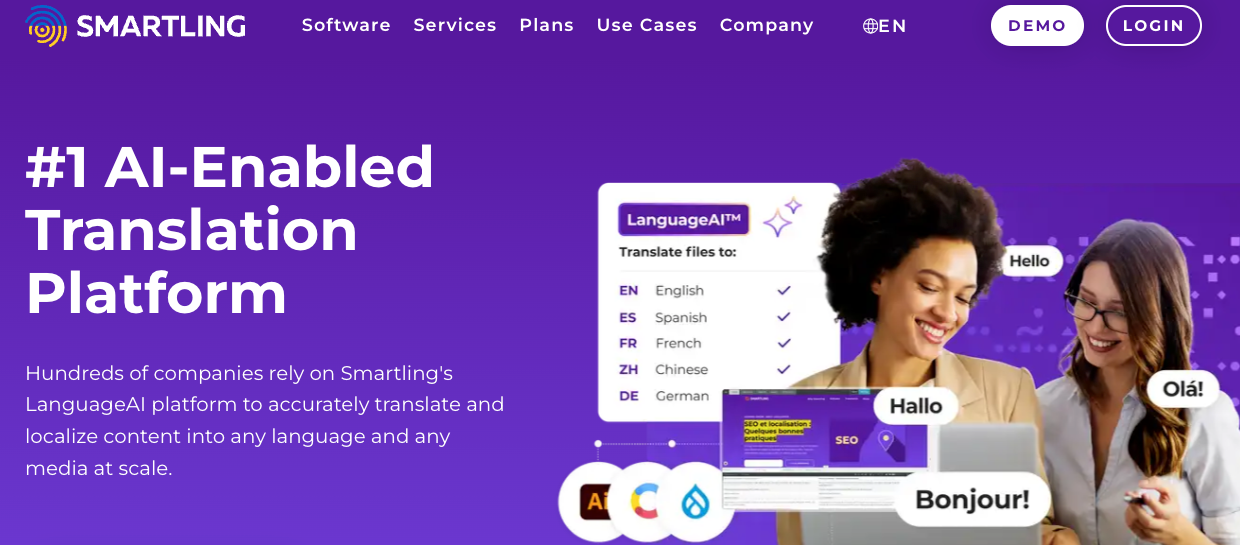 Smartling is the premium language quality solutions partner. (Source)
Smartling is the premium language quality solutions partner. (Source)
If you want to improve your localization strategy, you can start by assessing your translated content’s quality. This is why a more accurate and efficient language quality assurance tool is critical for improving localization.
Smartling is the all-in-one solution that localization teams and businesses need to translate and localize content. Companies can translate content while running language quality assurance checks and software to achieve the best possible content.
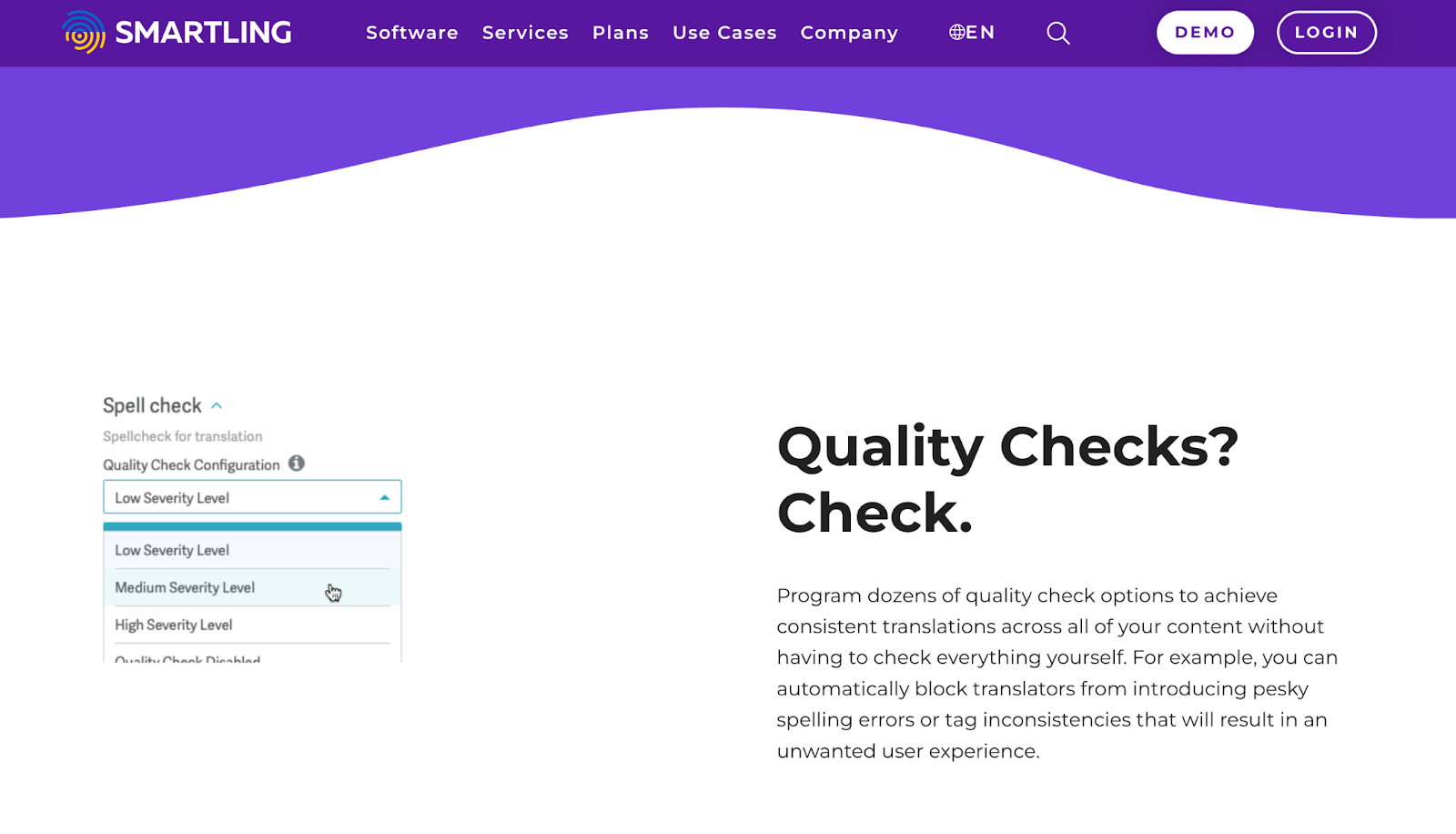 With Smartling’s translation management solution, teams can ensure high language quality. (Source)
With Smartling’s translation management solution, teams can ensure high language quality. (Source)
Smartling prioritizes language quality assurance by leveraging advanced AI technologies and expert linguists to reach the highest standards. This approach guarantees impeccable quality and empowers brands to communicate effectively and authentically across cultures.
With its translation management system, language services, and linguistic asset management tools, Smartling provides the best solution to optimize localization strategy. Brands can take advantage of Smartling’s top quality assurance solution and its all-in-one localization stack to build stronger audience connections and increase sales.
Book a demo now to see how your brand can reach new markets with higher-quality translations.
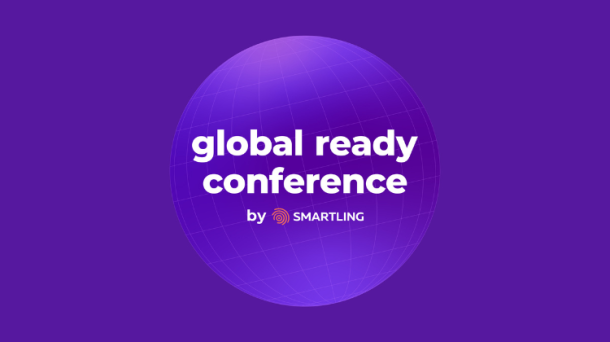
.jpg)




